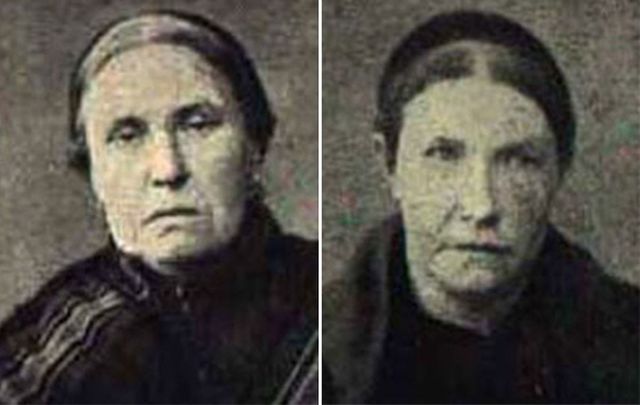How did two Irish emigrants, Mary and Margaret Higgins, become suspected serial killers who poisoned three of their partners in the late 19th century?
In the annals of criminal history, the story of the Black Widows of Liverpool stands out as a chilling account of the dark side of human nature. We delve into the crimes the Irish sisters were suspected of, examine their childhood and background, explore potential motivations behind their murderous acts, and shed light on what ultimately became of them.
Mary and Margaret Higgins, born in Ireland in the late 19th century, became known as the Black Widows due to their alleged involvement in a series of heinous crimes. They were suspected of targeting and murdering at least three men, all of whom were believed to be their husbands or partners. The sisters' modus operandi typically involved poisoning their victims.
The sisters were born into a humble background in Ireland, their early lives marked by poverty and adversity. Their upbringing, though challenging, did not offer an immediate explanation for the path they would later take as serial killers.
Like many others during that era, the sisters sought a better life and migrated to Liverpool, England. It was there that they became acquainted with the men they would eventually marry or enter into relationships with, setting the stage for the tragic events to come.
Speculation regarding the motivations driving the Black Widows' crimes revolves around a combination of financial gain and potential psychological factors. It is believed that they manipulated and poisoned their partners to inherit their wealth, which provided them with a means to escape their impoverished backgrounds. Some theories suggest that deep-seated resentments or a shared psychological disposition may have played a role.
The suspected crimes of the Black Widows garnered significant attention and shock from the public. The sisters were eventually apprehended and brought to trial. During the proceedings, details of their alleged crimes emerged, leaving the courtroom and the wider community in disbelief and horror.
Following a highly publicized trial, the sisters were found guilty of murder. They were subsequently sentenced to death, facing the ultimate punishment for their crimes. However, their sentences were later commuted to life imprisonment, and they spent the remainder of their lives behind bars.
The Black Widows of Liverpool's tale captured the public's imagination and became part of popular culture. The gruesome tale of two seemingly ordinary sisters turned serial killers has been retold in various forms, including books, documentaries, and even fictional adaptations, perpetuating their infamy.

Love Irish history? Share your favorite stories with other history buffs in the IrishCentral History Facebook group.
Their case raised questions about the nature of evil and the depths to which individuals can descend. It serves as a stark reminder that darkness can lurk within the seemingly ordinary, urging society to remain vigilant and attentive to signs of potential harm.
The crimes committed by the Black Widows provide valuable lessons for criminology, psychology, and law enforcement. The case highlights the importance of thorough investigations, the significance of understanding the motives behind criminal acts, and the ongoing need to protect vulnerable individuals from exploitation.
The chilling tale of the Black Widows of Liverpool continues to captivate and disturb, offering a glimpse into the complexities of the human psyche. The crimes they were suspected of, their troubled background, and the motivations driving their murderous acts stand as a reminder that evil can manifest in unexpected ways. As society grapples with understanding and preventing such crimes, the Black Widows serve as a haunting reminder of the dark corners of the human soul.




Comments